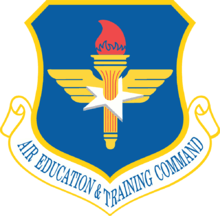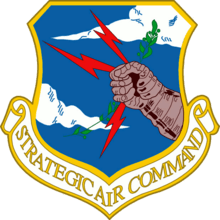367th Training Support Squadron
The 367th Training Support Squadron (367 TRSS), located at Hill AFB, Utah, is a component squadron of the 782d Training Group; part of the 82d Training Wing at Sheppard Air Force Base, Texas.[1]
| 367th Training Support Squadron | |
|---|---|
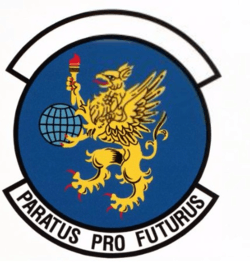 Emblem of the 367th Training Support Squadron | |
| Active | 1942–1974; 1993—present |
| Country | United States |
| Branch | United States Air Force |
| Type | Training Support |
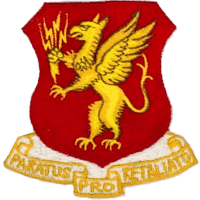
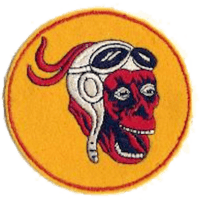
Overview
The 367 TRSS improves USAF combat capability by producing world-class interactive multimedia instruction for aircraft and munitions maintenance training for HQ ACC and HQ AMC. Enhance AF and DoD senior leader decision making through timely production of high-quality visual information products. Train and deploy combat-ready Combat Camera forces to document worldwide military operations, exercises, contingencies, and humanitarian relief operations.[2]
History[3][4]
The squadron was established as a B-17 Flying Fortress heavy bomb group in early 1942, training under Second Air Force before deploying to England in September 1942, and becoming one of the first heavy bomber squadrons of the VIII Bomber Command 1st Bombardment Division. The squadron was a highly decorated squadron during the Air Offensive over Nazi Germany and occupied Europe, engaging in strategic bombardment operations until the end of the war in Europe in April 1945. It then assisted in demobilizing personnel using B-17s as transports along ATC routes from Western Europe, Italy and the United Kingdom to the Azores and North and West Africa.
After the end of World War II, it was reassigned to United States Air Forces in Europe occupation forces in late 1945, where it engaged in photographic mapping and strategic reconnaissance operations over Western occupation zones of Germany as well as the Soviet zone. It was then reassigned to Istes, France where it absorbed parts of demobilized squadrons and then returned to Germany as part of the American occupation forces. It demobilized in Germany at the end of 1946.
The squadron was reactivated as a Strategic Air Command B-29 Superfortress squadron at MacDill AFB, Florida in 1948, where is began upgrading to the new B-50 Superfortress, an advanced version of the B-29 in 1950. It began receiving the first production models of the new Boeing B-47 Stratojet jet bomber in 1951 and despite initial difficulties, the Stratojet became the mainstay of the medium-bombing strength of SAC all throughout the 1950s. It began sending its B-47s to AMARC at Davis–Monthan in 1963 when the aircraft was deemed no longer capable of penetrating Soviet airspace.
Reassigned to McCoy AFB after the B-47 was phased out, the squadron became a B-52 Stratofortress heavy bomb squadron. It was deployed to Pacific during Vietnam War, engaging in Arc Light combat missions over North Vietnam. It was also deployed to Thailand flying out of U-Tapao RTNAF for combat missions over Cambodia and Laos. It returned to the United States in 1973, and was phased down for inactivation and inactivated as part of the post-Vietnam drawdown of the USAF.
The squadron was again reactivated as a training support squadron in 1993. The 367th Training Support Squadron is currently located at Hill Air Force Base, Utah. The 367th supports the Air Combat Command and the Air Mobility Command by providing reliable, unbiased, fact-based performance analysis, identifying root causes of performance deficiencies, and recommending possible solutions. Depending on the root cause identified, the 367th combines Instructional System Design (ISD) with the latest technologies in E-Learning solutions to alleviate specific knowledge and skill gaps. One of its key functions is to create world-class interactive multimedia instruction to improve aircraft and munitions maintenance training.
Lineage
- Constituted 367th Bombardment Squadron (Heavy) on 28 January 1942
- Activated on 1 March 1942
- Inactivated on 25 December 1946
- Redesignated 367th Bombardment Squadron (Very Heavy) on 11 June 1947
- Activated on 1 July 1947
- Redesignated 367th Bombardment Squadron (Medium) on 11 August 1948
- Redesignated 367th Bombardment Squadron (Heavy) on 1 April 1963
- Organized on 1 April 1963; receiving personnel/aircraft/equipment from 347th Bombardment Squadron (Inactivated)
- Inactivated on 1 July 1974
- Redesignated 367th Training Support Squadron, and activated on 1 July 1993
Assignments
- 306th Bombardment Group, 1 March 1942 – 25 December 1946
- ETO Fuselage Code: GY
- 306th Bombardment Group, 1 July 1947
- 306th Bombardment Wing, 16 June 1952 – 1 July 1974
- Not operational, 3 January-1 April 1963; 1 November 1973 – 1 July 1974
- 782d Training Group, 1 July 1993–present
Stations
|
|
Aircraft
- B-17 Flying Fortress, 1942–1946
- B-29 Superfortress, 1948–1951
- B-50 Superfortress, 1950–1951
- B-47 Stratojet, 1951–1963
- B-52 Stratofortress, 1963–1973
References
![]()
- "Make training great again!". www.hill.af.mil. U.S. Air Force. Retrieved 5 July 2018.
- "AF culture, standards now in the palm of your hand". www.af.mil. U.S. Air Force. Retrieved 5 July 2018.
- Maurer, Maurer, ed. (1983) [1961]. Air Force Combat Units of World War II (PDF) (reprint ed.). Washington, DC: Office of Air Force History. ISBN 0-912799-02-1. LCCN 61060979.
- Maurer, Maurer, ed. (1982) [1969]. Combat Squadrons of the Air Force, World War II (PDF) (reprint ed.). Washington, DC: Office of Air Force History. ISBN 0-405-12194-6. LCCN 70605402. OCLC 72556.

